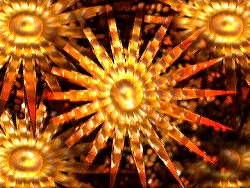Description
Callas writes that Lost in Translation (Part 1: Plus Ultra) "attempts to syncretically avaunt the 'borders of identity' in an anti-historical reconstruction of 'Brazil.'" Through a complex re-animation of iconography from the "proto-colonial history of Latin America," Callas integrates historical materials in what he describes as a "tangential" manner, reciprocating the "intuitive" and disparate relationship between history and memory. Plus Ultra ("Ever Onward," the motto of the Spanish conquistadors) focuses on the period prior to the 1494 Papal Line of Demarcation. Exquisitely rendered images, collected from Portuguese and Brazilian sources, twist and meld into one another through multiple planes of movement, each juxtapostion evoking new, perpetually evolving meanings. Cartography plays a crucial role in the work, as Callas explores the ways in which practices that redraw the world set the stage for colonial and post-colonial realities. The larger project of Lost in Translation is to interrogate the implications of technologies of representation upon perception and the construction of subjects.
Callas developed several 2D and 3D animation processes in creating the imagery of Lost in Translation, using Softimage, Particle, Xaos Pandemonium, XFrog, and Photoshop software on an SGI Platform and Digital Fusion with 5D plugins on WindowsNT. Lost in Translation features a unique manipulation of 2D cutouts in 3D spaces, using both inverse kinematic and keyframed path animation.
Produced in association with the Australian Film Commission. Music: Robert Moss. Digital Fusion, Flame, Softimage 3D, Softimage, Xaos Pandemonium, Xfrog Operator/ Photoshop Artist/Nonlinear Editor: Peter Callas. Image Sources: Jay Seabold, Hispanic and Portuguese collections of the Library of Congress. Produced in part during a residency at the Zentrum fur Kunst und Medientechnologie, Karlsruhe, Germany.
